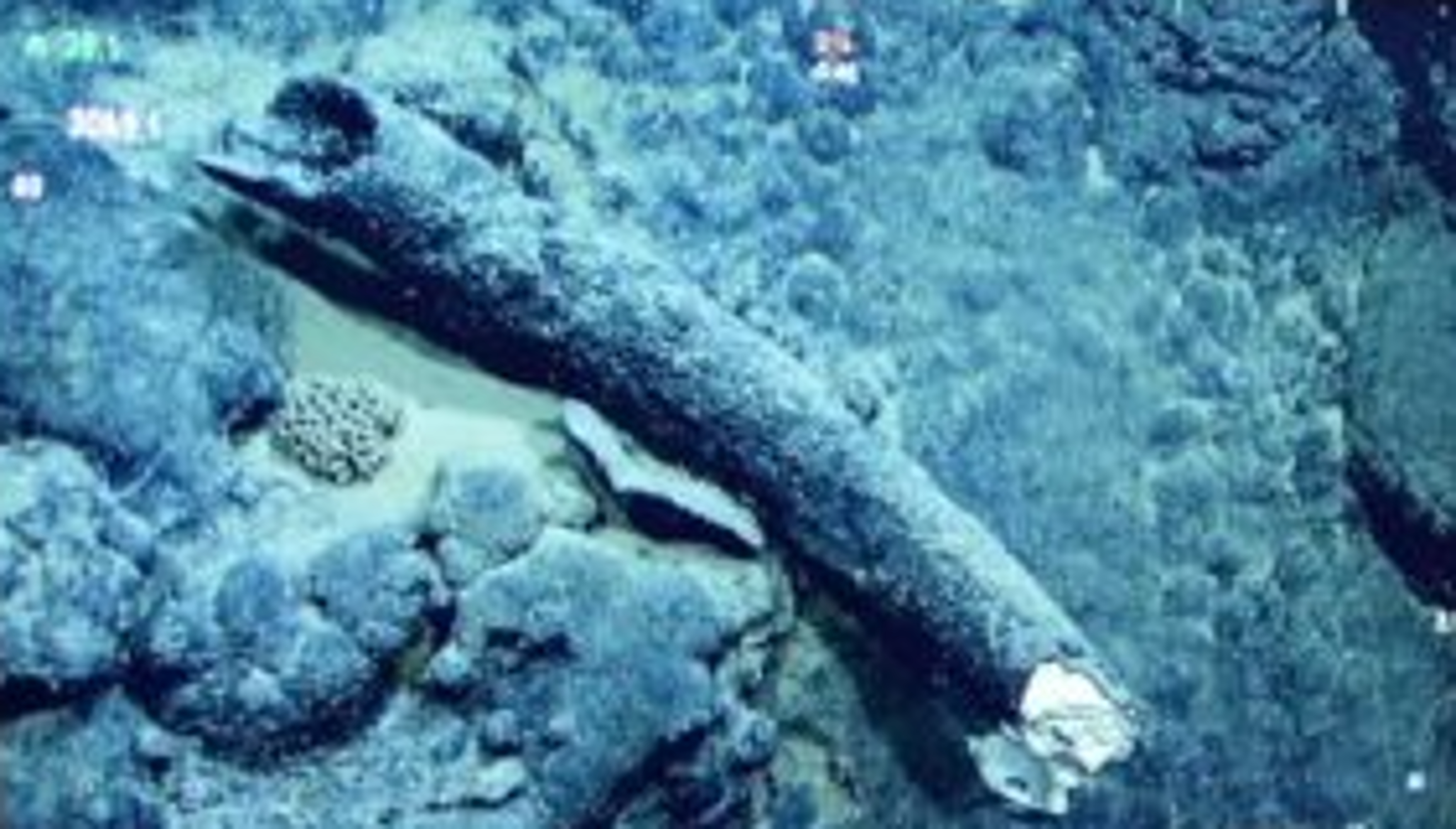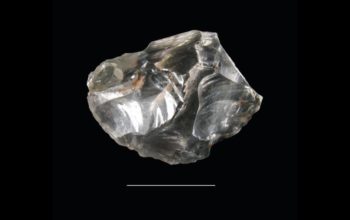A three foot Columbian mammoth tusk was retrieved in the deep ocean approximately 185 miles off the California coast. Experts believe the tusk could be 10,000 years old
The following written content from Hannah Osborne

Scientists were surveying the waters about 185 miles off the shore as part of a 2019 expedition to a seamount 10,000 feet below the surface. The team, using a remote operating vehicle, spotted what looked like an elephant tusk. They returned to the site two years later to retrieve it.
“You start to ‘expect the unexpected’ when exploring the deep sea, but I’m still stunned that we came upon the ancient tusk of a mammoth,” Steven Haddock, a marine biologist from the Monterey Bay Aquarium Research Institute, said in a statement.
The tusk measures about 3 feet in length. Analysis has confirmed it belonged to a Columbian mammoth, a species that once roamed the southern part of North America, from the northern U.S., down to Mexico and parts of Costa Rica. They disappeared between 13,000 and 10,000 years ago, toward the end of the last ice age, probably as a result of habitat loss and climate change.
Beth Shapiro, professor of ecology and evolutionary biology at the UC Santa Cruz, is part of the team that will sequence and analyze the DNA of the mammoth, providing a view into the animal’s life.
“Specimens like this present a rare opportunity to paint a picture both of an animal that used to be alive and of the environment in which it lived,” she said in a statement. “Mammoth remains from continental North America are particularly rare, and so we expect that DNA from this tusk will go far to refine what we know about mammoths in this part of the world.”
The team said it could be one of the oldest well-preserved mammoth tusks ever found in North America.
During the last ice age, glaciers covered a much larger portion of the planet than they do today. As a result of the ice being locked away, sea levels were around 400 feet lower than they are now, meaning the shore line was farther out than it is now.
Found in Pristine Condition
Mammoth fossils have been found off the coast of the U.S. before this, but never in such pristine condition.
“Other mammoths have been retrieved from the ocean, but generally not from depths of more than a few tens of meters,” Daniel Fisher, whose work at the University of Michigan focuses on mammoths and mastodons, said in a statement. “This specimen’s deep-sea preservational environment is different from almost anything we have seen elsewhere.”

As well as learning more about the individual mammoth, the team will study the mineral crusts of the tusk to understand how it ended up so far out to sea.
“We are grateful to have a multidisciplinary team analyzing this remarkable specimen,” Haddock said. “Our work examining this exciting discovery is just beginning. Read more from Newsweek
Subscribe here
Please note the top photo is at the University of Alaska Museum, Fairbanks and is not related to this tusk





